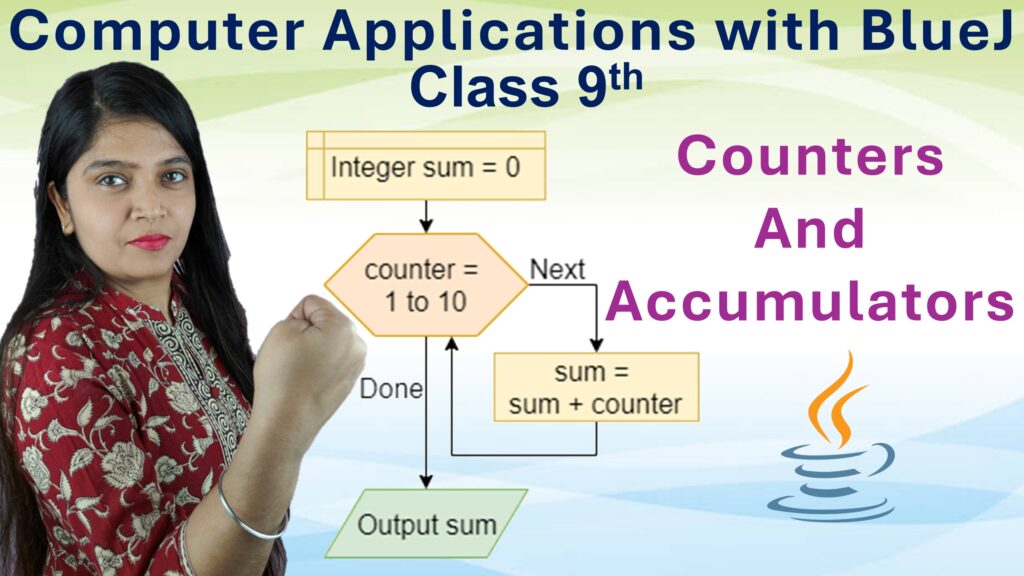Exercise: 1-E
Q1: Multiple Choice Type
i. In the following number line, points A and B represent:
👉 Each unit on the number line is divided into 5 equal parts.
🔹 Point A:
Point A is **1 step left of -2**:
\[
A = -2 – \frac{1}{5} = -\frac{10}{5} – \frac{1}{5} = -\frac{11}{5} = -1\frac{4}{5}
\]🔹 Point B:
Point B is **3 steps right of 2**:
\[
B = 2 + \frac{3}{5} = \frac{10}{5} + \frac{3}{5} = \frac{13}{5} = 2\frac{3}{5}
\]Correct Answer: c. \(-1\frac{4}{5}\ and\ 2\frac{3}{5}\)
ii. Using the number line, given above; the length of line segment AB is:
Line segment AB = Distance between A and B
\[
AB = \left| \frac{13}{5} – \left( -\frac{11}{5} \right) \right|
= \left| \frac{13}{5} + \frac{11}{5} \right|
= \left| \frac{24}{5} \right| = 4\frac{4}{5}
\]
So, the correct answer is:
Correct Answer: c. \(4\frac{4}{5}\)
iii. The rational number between \(\frac{a}{b}\ and\ \frac{c}{d}\) is:
To find a rational number between two given rational numbers, we use:
\[
\text{Midpoint} = \frac{a+c}{b+d}
\]So, the correct answer is:
Correct Answer: c. \(\frac{a+c}{b+d}\)
iv. Two rational numbers between \(\frac{1}{3}\ and\ \frac{1}{2}\) are:
Let’s convert to like denominators:
\[
\frac{1}{3} = \frac{8}{24}, \quad \frac{1}{2} = \frac{12}{24}
\]
So values between them could be: \(\frac{9}{24} = \frac{3}{8}, \quad \frac{10}{24} = \frac{5}{12}\)
Thus a valid pair is: \(\frac{3}{8}\) and \(\frac{2}{5}\)
But from options:
Correct Answer: a. \(\frac{3}{7}\) and \(\frac{3}{8}\) (Both between \(\frac{1}{3}\) and \(\frac{1}{2}\)) is correct.
v. The rational numbers \(-\frac{7}{4}\ and\frac{3}{4}\) are represented by:
First, each unit on the number line is divided into 4 equal parts, meaning each tick = \(\frac{1}{4}\).
🔹 Let’s find \(-\frac{7}{4}\):We know:
\[
-\frac{7}{4} = -1\frac{3}{4}
\]From **0**, go **1 full unit left to -1**, then go **3 more divisions (¼ each)** left → lands on **Point C**.
✅ So, \(-\frac{7}{4} = \textbf{Point C}\)🔹 Now find \(\frac{3}{4}\):\[
\frac{3}{4} = 0 + \frac{3}{4}
\]From **0**, go **3 divisions (¼ each)** right → lands on **Point E**.
✅ So, \(\frac{3}{4} = \textbf{Point E}\)Correct Answer: c. C and E respectively
Q2: Draw a number line and mark \(\frac{3}{4},\frac{7}{4},\frac{-3}{4}\ and\ \frac{-7}{4}\) on it.
Step 1: Convert all the given numbers to decimal form for better placement on the number line.
\[
\frac{3}{4} = 0.75,\quad \frac{7}{4} = 1.75,\quad \frac{-3}{4} = -0.75,\quad \frac{-7}{4} = -1.75
\]Step 2: Draw a number line ranging from -2 to 2 and mark the above positions approximately.Marked Points:
✓ -1.75 → -7/4
✓ -0.75 → -3/4
✓ 0.75 → 3/4
✓ 1.75 → 7/4
←────●──|──|──|──●──|──|──|──●──|──|──|──●──|──|──|──●──|──|──|──●──|──|──|──→
-3 -2 -1¾ -1 -¾ 0 ¾ 1 1¾ 2
↑ ↑ ↑ ↑
-7/4 marked -3/4 marked 3/4 marked 7/4 marked
Q3: On a number line mark the points \(\frac{2}{3},\frac{-8}{3},\frac{7}{3},\frac{-2}{3}\ and\ -2\).
Step 1: Convert the rational numbers to decimals.\[
\frac{2}{3} \approx 0.666,\quad \frac{-8}{3} \approx -2.666,\quad \frac{7}{3} \approx 2.333,\quad \frac{-2}{3} \approx -0.666,\quad -2 = -2.0
\]Step 2: Draw a number line ranging from -3 to 3.Marked Points:
✓ -2.666 → -8/3
✓ -2.0 → -2
✓ -0.666 → -2/3
✓ 0.666 → 2/3
✓ 2.333 → 7/3
←──●───|───|───●───|───|───●───|───|───●───|───|───●───|───|───●───|───|───●───|───|───●───|──→
-4 -3 -2 -1 0 1 2 3
↑ ↑ ↑ ↑ ↑
-8/3 marked -2 marked -2/3 marked 2/3 marked 7/3 marked
Q4: Insert one rational number between
i. \(\frac{3}{5}\ and\frac{5}{8}\)
Step 1: Add numerator with numerator and denominator with denominator:
\[
\frac{3+5}{5+8} = \frac{8}{13}
\]Step 2: A number between \(\frac{3}{5}\ and\frac{5}{8}\) is:
→ (8/13)
Answer:
One rational number = \(\frac{8}{13}\)ii. \(\frac{1}{2}\ and\ 2\)
Convert to decimal:
1/2 = 0.5, 2 = 2.0
Any number between 0.5 and 2 is valid.
→ (1) is between 1/2 and 2Answer: 1
Q5: Insert two rational numbers between: \(\frac{5}{7}\ and\frac{3}{8}\).
Step 1: LCM of 7 and 8 = 56
\[
\frac{5}{7} = \frac{40}{56},\quad \frac{3}{8} = \frac{21}{56}
\]Since \(40 > 21\), we reverse order:
\[
\frac{21}{56},\ \frac{40}{56}
\]Step 2: Multiply numerator and denominator by \(2 + 1 = 3\)
\[
\frac{21 \times 3}{56 \times 3} = \frac{63}{168},\quad \frac{40 \times 3}{56 \times 3} = \frac{120}{168}
\]Now numbers between 63 and 120 with denominator 168 are:
\[
\frac{64}{168},\ \frac{65}{168}
\]∴ Required numbers: \( \frac{64}{168},\ \frac{65}{168} \)
Q6: Insert three rational numbers between: \(\frac{8}{11}\ and\ \frac{4}{9}\).
LCM of 11 and 9 = 99
\[
\frac{8}{11} = \frac{72}{99},\quad \frac{4}{9} = \frac{44}{99}
\]Order: \( \frac{44}{99},\ \frac{72}{99} \)Multiply both by \(3 + 1 = 4\):
\[
\frac{44 \times 4}{99 \times 4} = \frac{176}{396},\quad \frac{72 \times 4}{99 \times 4} = \frac{288}{396}
\]Now pick 3 values between 176 and 288:
\[
\frac{200}{396},\ \frac{220}{396},\ \frac{250}{396}
\]∴ Required numbers: \( \frac{200}{396},\ \frac{220}{396},\ \frac{250}{396} \)
Q7: Insert five rational numbers between \(\frac{3}{5}\ and\frac{2}{3}\).
LCM of 5 and 3 = 15
\[
\frac{3}{5} = \frac{9}{15},\quad \frac{2}{3} = \frac{10}{15}
\]Multiply by \(5 + 1 = 6\):
\[
\frac{9 \times 6}{15 \times 6} = \frac{54}{90},\quad \frac{10 \times 6}{15 \times 6} = \frac{60}{90}
\]Pick 5 values between 54 and 60:
\[
\frac{55}{90},\ \frac{56}{90},\ \frac{57}{90},\ \frac{58}{90},\ \frac{59}{90}
\]∴ Required numbers: \( \frac{55}{90},\ \frac{56}{90},\ \frac{57}{90},\ \frac{58}{90},\ \frac{59}{90} \)
Q8: Insert six rational numbers between \(\frac{5}{6}\ and\frac{8}{9}\).
LCM of 6 and 9 = 18
\[
\frac{5}{6} = \frac{15}{18},\quad \frac{8}{9} = \frac{16}{18}
\]Multiply by \(6 + 1 = 7\):
\[
\frac{15 \times 7}{18 \times 7} = \frac{105}{126},\quad \frac{16 \times 7}{18 \times 7} = \frac{112}{126}
\]Pick 6 values between 105 and 112:
\[
\frac{106}{126},\ \frac{107}{126},\ \frac{108}{126},\ \frac{109}{126},\ \frac{110}{126},\ \frac{111}{126}
\]∴ Required numbers: \( \frac{106}{126},\ \frac{107}{126},\ \frac{108}{126},\ \frac{109}{126},\ \frac{110}{126},\ \frac{111}{126} \)
Q9: Insert seven rational numbers between 2 and 3.
Write: \(2 = \frac{2}{1},\quad 3 = \frac{3}{1}\)
Multiply by \(7 + 1 = 8\):
\[
\frac{2 \times 8}{1 \times 8} = \frac{16}{8},\quad \frac{3 \times 8}{1 \times 8} = \frac{24}{8}
\]Now pick 7 values between 16 and 24:
\[
\frac{17}{8},\ \frac{18}{8},\ \frac{19}{8},\ \frac{20}{8},\ \frac{21}{8},\ \frac{22}{8},\ \frac{23}{8}
\]∴ Required numbers: \( \frac{17}{8},\ \frac{18}{8},\ \frac{19}{8},\ \frac{20}{8},\ \frac{21}{8},\ \frac{22}{8},\ \frac{23}{8} \)







Leave a Comment